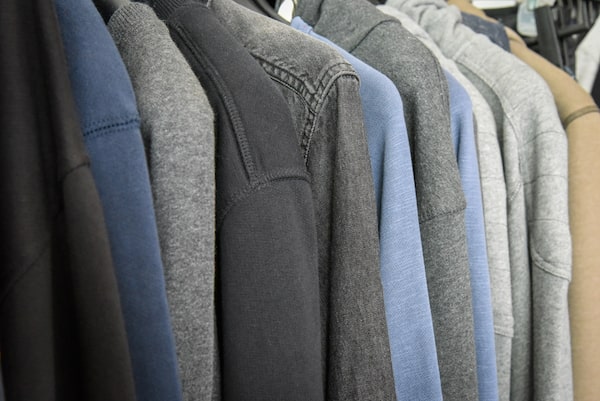The global COVID-19 pandemic has changed the lives of every person on the planet. With the United States going into a recession, millions are out of work and are being forced to rethink their spending habits. In addition, the current lockdowns are in effect in different parts of the country inconsistently. This means many retailers are being impacted by these changes. Unsold seasonal merchandise has piled up and retailers are now stuck with the task of trying to stay relevant with leftover product while also trying to stay ahead of the fashion curve. As stated by fashion psychologist and branding consultant Dawnn Karen, “The longer we stay in this pandemic, the more our relationship with fashion will evolve”. While many are still at a point of uncertainty, there are trends already taking hold across the country.
Fashion Industry Pandemic Trends
With lockdowns in effect and keeping many at home, people are buying fewer garments and even looking for old clothes. Fashion industry revenues were expected to drop by a third in 2020 which is the equivalent of $640-billion in lost sales. When people do shop for clothes, they tend to buy the most casual clothes they can find like pajamas, loungewear and sweatpants. Purchases of sweats increased by 80% in April of 2020, and Google searches for sweats hit a 14-year high. Before the pandemic, the casual look of sweats, hoodies and jogger pants started to become the norm in the workplace. This was especially true in more creative and tech sectors. With many people having to work at home, those options have become the “go-to” for daily work clothes.

It is said that neutral colors are becoming more popular clothing options over the flashy wear that usually prompt many to try and match with their outfits. Once upon a time, seasonal colors allowed manufacturers to keep their finger on the pulse of the latest trends. Current events have made it impossible for them to forecast what’s next. “What we’re looking for today are core basics,” Morris Goldfarb, chief executive of G-III Apparel Group explains. “Fashion is not as important this year”. With this becoming common knowledge, retailers have stocked up on plain shirts, jeans and neutral beige and khaki selections that are sure to sell.
On the other end of the spectrum, sales of makeup (especially eye makeup) are growing as Americans are expressing themselves behind face masks. False eyelashes have been consistently averaging 15% increases, week after week, according to market research firm NPD Group. Mascara sales grew 11% in the same period and demand for eyebrow products increased 5%. “It makes complete sense,” said Larissa Jensen, a beauty analyst for NPD. “When you have to go out and you’re wearing a protective face mask, those are the products that emphasize your ‘smize’ – your smiling eyes.”
However the sales of lip products fell 5% in May 2020. It’s safe to assume that nobody wants lipstick smudges in their masks. Makeup sales picked up after months of decline which coincided with the lockdown period when much of the country was at home. During that period of time, Americans began to favor facial care products over cosmetics with sales for soaps, washes and topical creams increasing.
Sales of high heels, loafers and other dress shoes had been on a decline for years but that was further accelerated with the pandemic since many weren’t traveling as much or going into an office. The sales of men’s and women’s dress shoes dipped 70% in March and April of 2020, according to NPD. “High heels are way down,” said Beth Goldstein, a footwear analyst for NPD. “The question now is whether they’ll ever rebound. Of course, some women out there are dying to put their heels back on. But I think most of them are saying, ‘I’m never going to wear those shoes again.’” Consumers have shifted their attention and needs regarding footwear solely to comfort over style. Slipper sales have doubled and Americans began to spend on more higher-priced options (like Ugg products). There has also been an increase in sales for Crocs.
Historically it has been noted that skirts and dresses get longer as the economy worsens. As a sign of the times, we’re beginning to see that trend head in the opposite direction. Hemlines are inching shorter and they’re expected to get even shorter. Retailers are starting to get desperate and offer new options to lure in customers and guarantee more sales. If shoppers already have closets filled with ankle-length styles, they’re now being presented with above-the-knee fashion. This also goes back to the point of comfort and functionality over looks influencing consumers in these times.
What Fashion Trend is Next?
In this climate, many industries and businesses are looking at the grim possibility of going under but the fashion industry has historically weathered the storm in the past. There will be a day where society has defeated the pandemic but trends may never go back to normal. However, it is hoped that the fashion industry will be intact and thriving more than ever.
– JM
